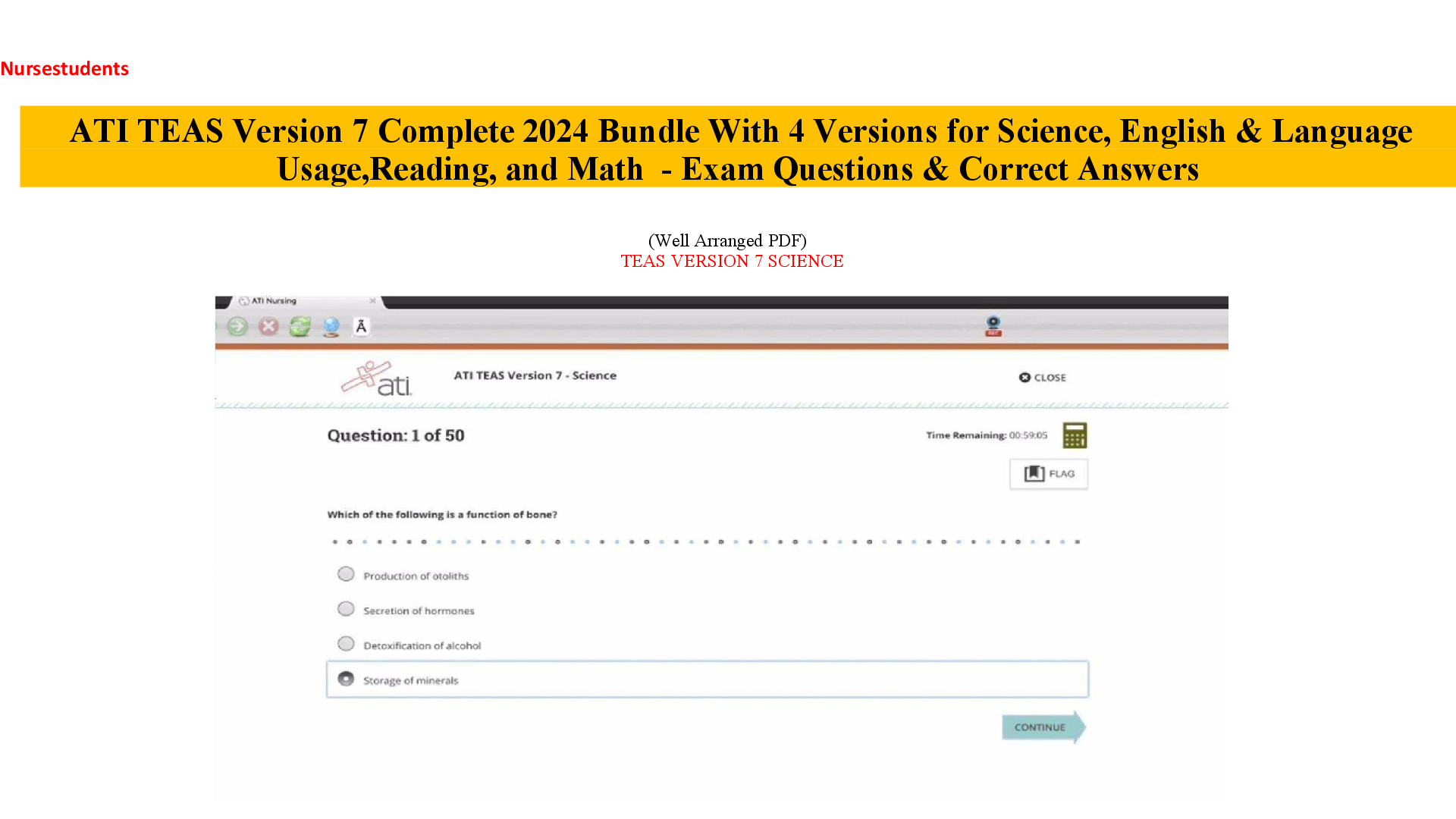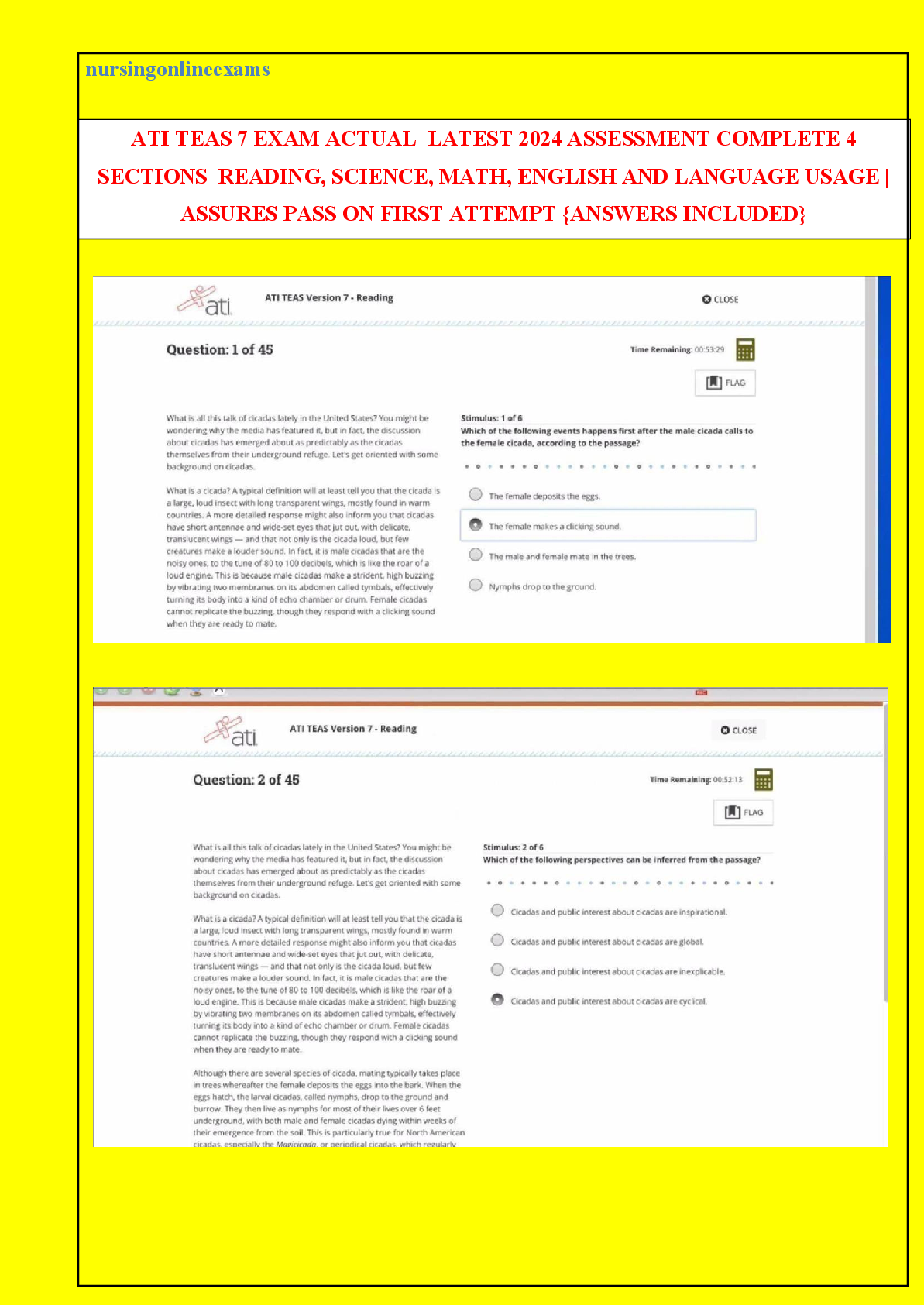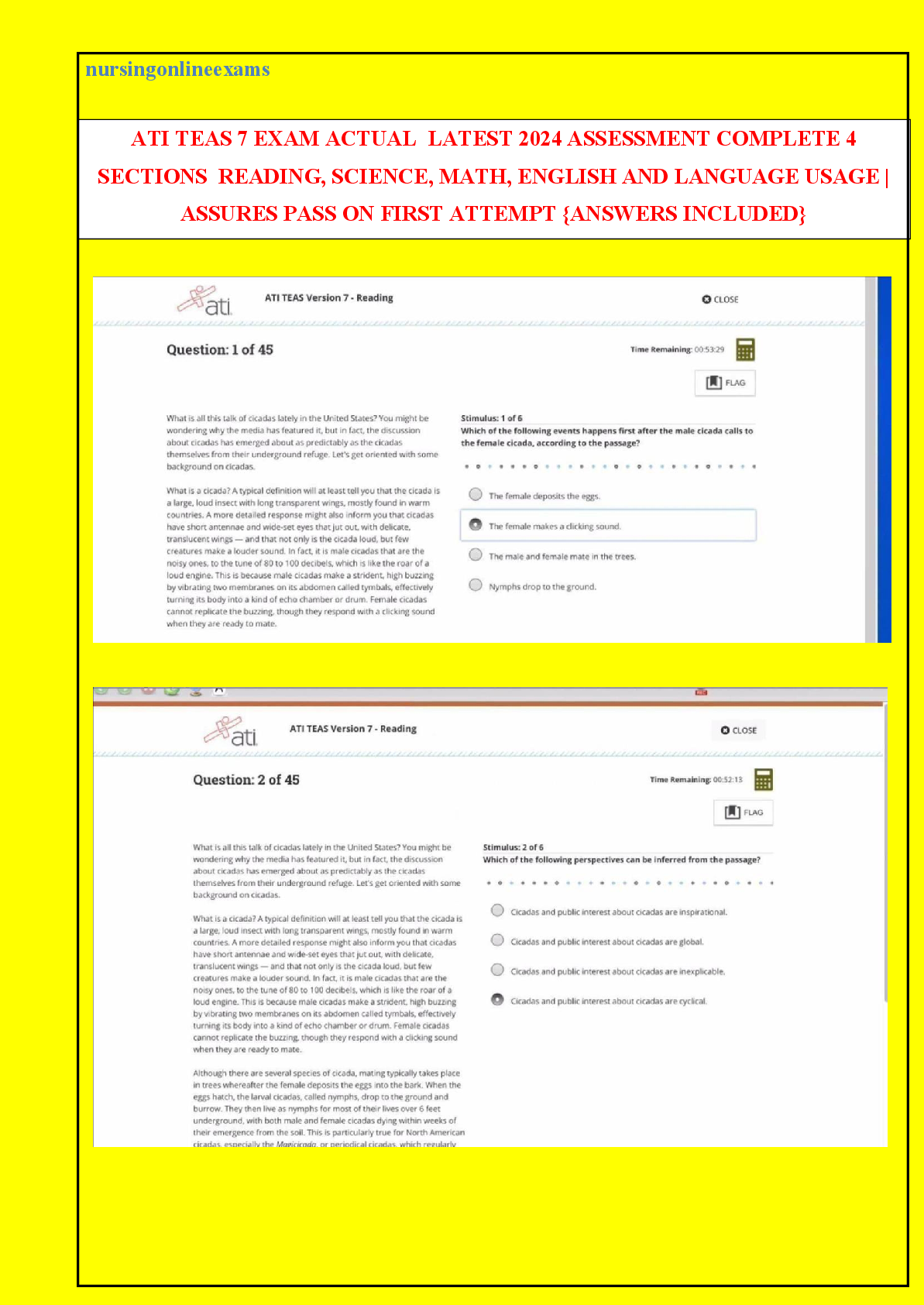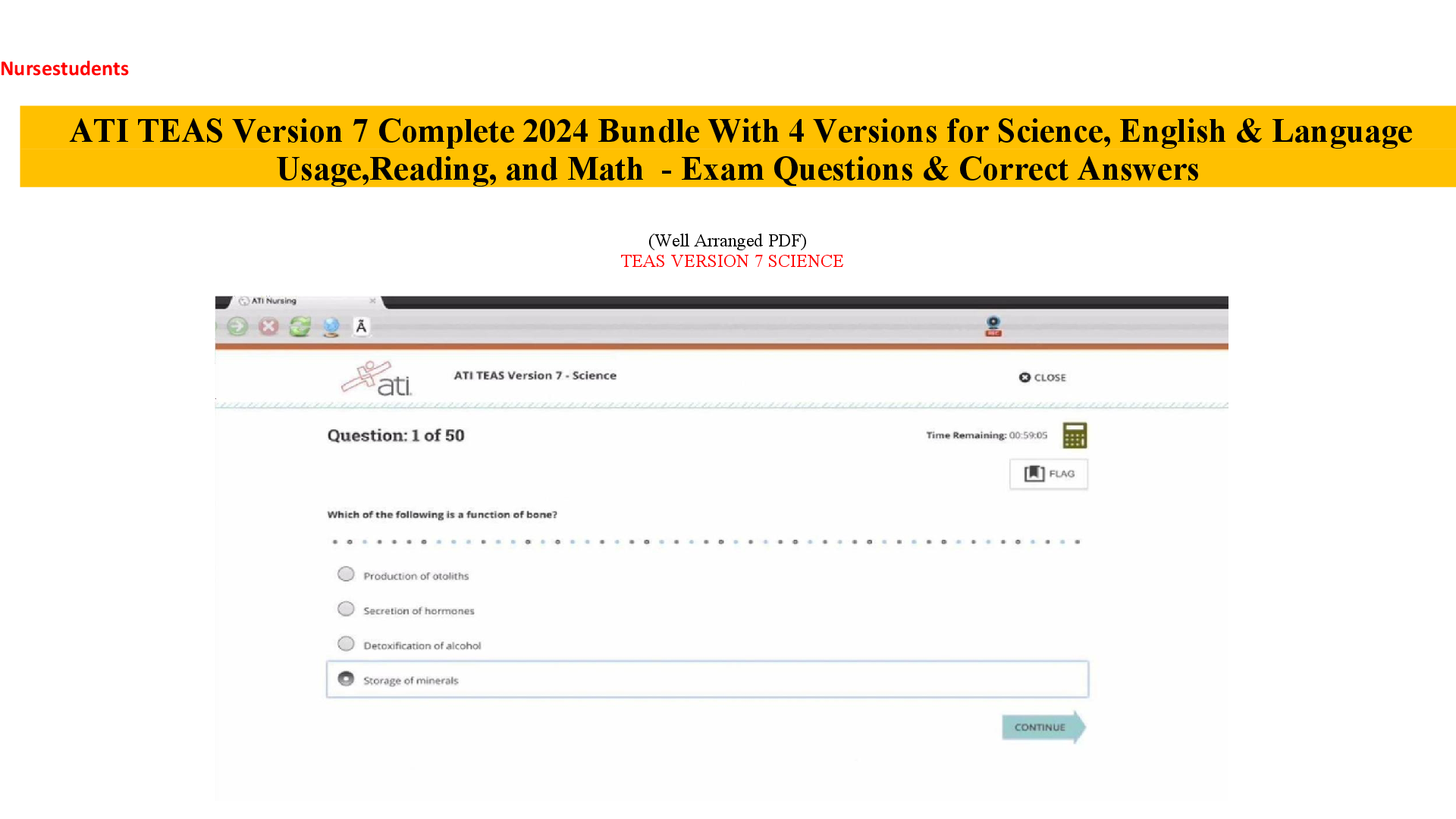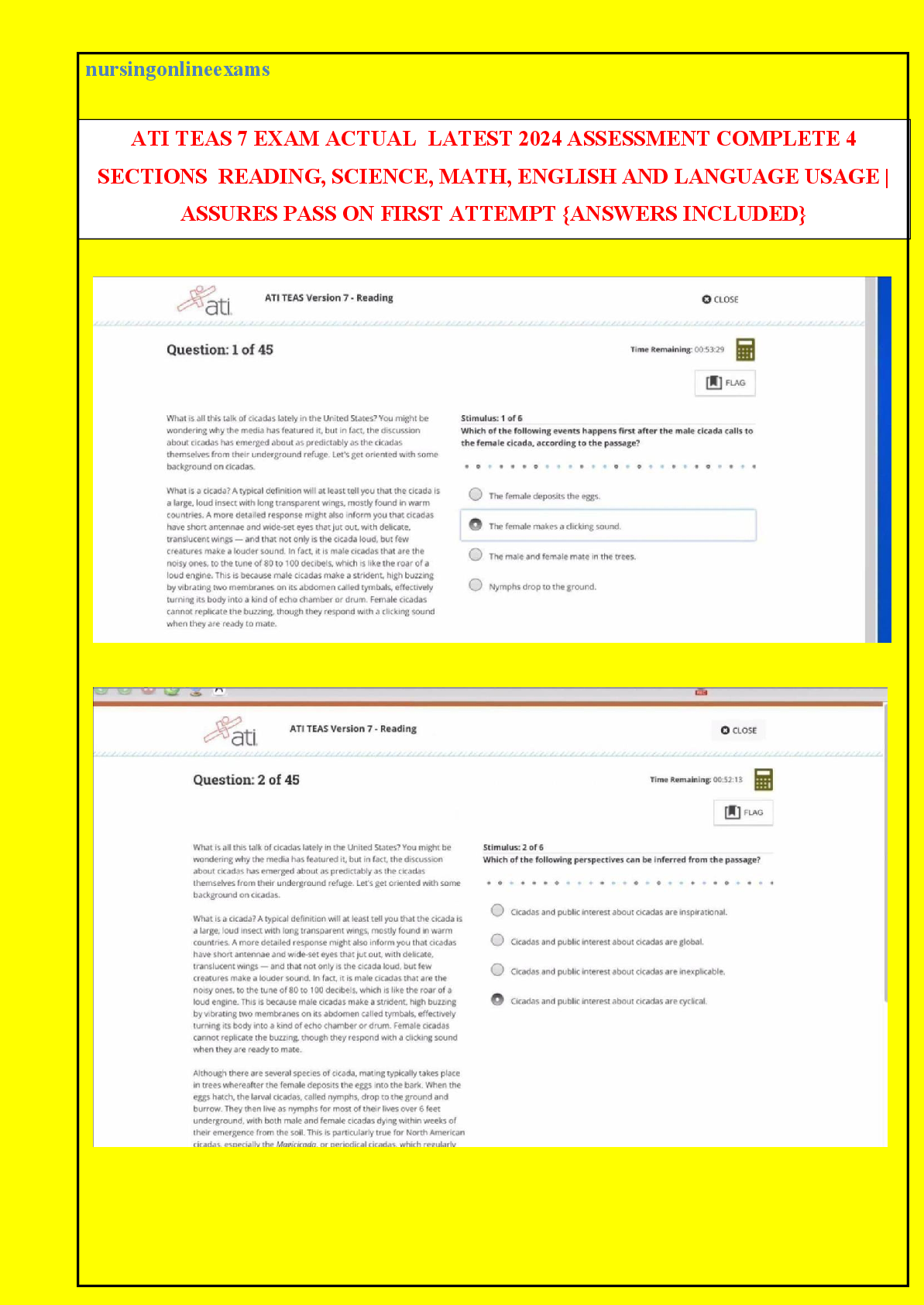Biology > EXAM > Summary ATI TEAS 7 ALL SECTIONS PREP: Complete A+ Score Guide; Latest Updated (All)
Summary ATI TEAS 7 ALL SECTIONS PREP: Complete A+ Score Guide; Latest Updated
Document Content and Description Below
ATI TEAS 7 ALL SECTIONS PREP: Complete A+ Score Guide ANATOMY & PHYSIOLOGY Anatomy: is what you see with your eyes in the human body. Microscopic Anatomy: examines cells and molecules. Cytology: s... tudy of cells. Histology: study of tissues. Physiology: is the study of functions of anatomical structures. *Smallest living is a CELL. *Smallest organisms is a ATOM. Levels of Hierarchy Atom- the most basic complete unit of an element. Molecule- a group of atoms bonded together, representing the smallest fundamental unit of a chemical compound that can take part in a chemical reaction. Organelles- are cells parts that function within a cell. Cells- the basic structural unit of an organism from which living things created. Is one individual cell. Tissues- a group of cells with similar structure that functions together as a unit, but at a lower level than organs. Organ- a self contained part of an organism that performs specific functions. Is formed by two or more similar tissues. Organ System- functional groups of organs that work together within the body: circulatory, integumentary, skeletal, reproductive, digestive, urinary, respiratory, endocrine, lymphatic, muscular and nervous. Humans have 11 Organ Systems. Cells Structure • Nucleus - holds the cells DNA in form of chromatin • Ribosomes- small structures that build proteins “amino acids”. • Golgi Apparatus- modifies and packages proteins secreted from cell. • Vacuoles - storage, digestion and waste removal. • Cytoskeletal- series of rod shaped proteins that provide shape/support cell. • Microtubules - part of the cytoskeletal. • Cytosol - liquid material in cell. • Cell membrane - separate internal and external cellular environment allows material to enter and exit cell. • Endoplasmic Reticulum- smooth or rough transport system of the cell. • Mitochondria- generates ATP powerhouse of the cell. ATP production is called cellular respiration Animal Cells Centrosome- pairs of centrioles involved in mitosis. Centriole- cylinders involved in cellular division. Lysosomes- the purpose of the lysosome is to digest things. They might be used to digest food or break down the cell when it dies. Cilia- cause cell to move. Flagella- whip tail to move cell. TISSUES: Group of CELLS. Muscle, Nerve, Epithelial, Connective. 1. Epithelial: ( joined together tightly) Example. Skin 2. Connective: (dense, loose, or fatty) Example. Tissue, Cartilage, Tendons, Ligaments, Fat, Blood, Lymph. It protects and binds body parts. a. Cartilage: cushions and provides structural support Fibrous b. Blood: transport oxygen to cells and removes waste. Also carries hormones and defends against disease. c. Bone: (hard) produces red blood cells 3. Muscle: supports and move body Smooth Cardiac Skeletal 4. Nervous: Example. Brain, spinal cord, and nerves. Neurons: control responses to changes in environment [Show More]
Last updated: 2 years ago
Preview 1 out of 52 pages

Buy this document to get the full access instantly
Instant Download Access after purchase
Buy NowInstant download
We Accept:

Reviews( 0 )
$10.50
Can't find what you want? Try our AI powered Search
Document information
Connected school, study & course
About the document
Uploaded On
Oct 06, 2022
Number of pages
52
Written in
Additional information
This document has been written for:
Uploaded
Oct 06, 2022
Downloads
0
Views
138


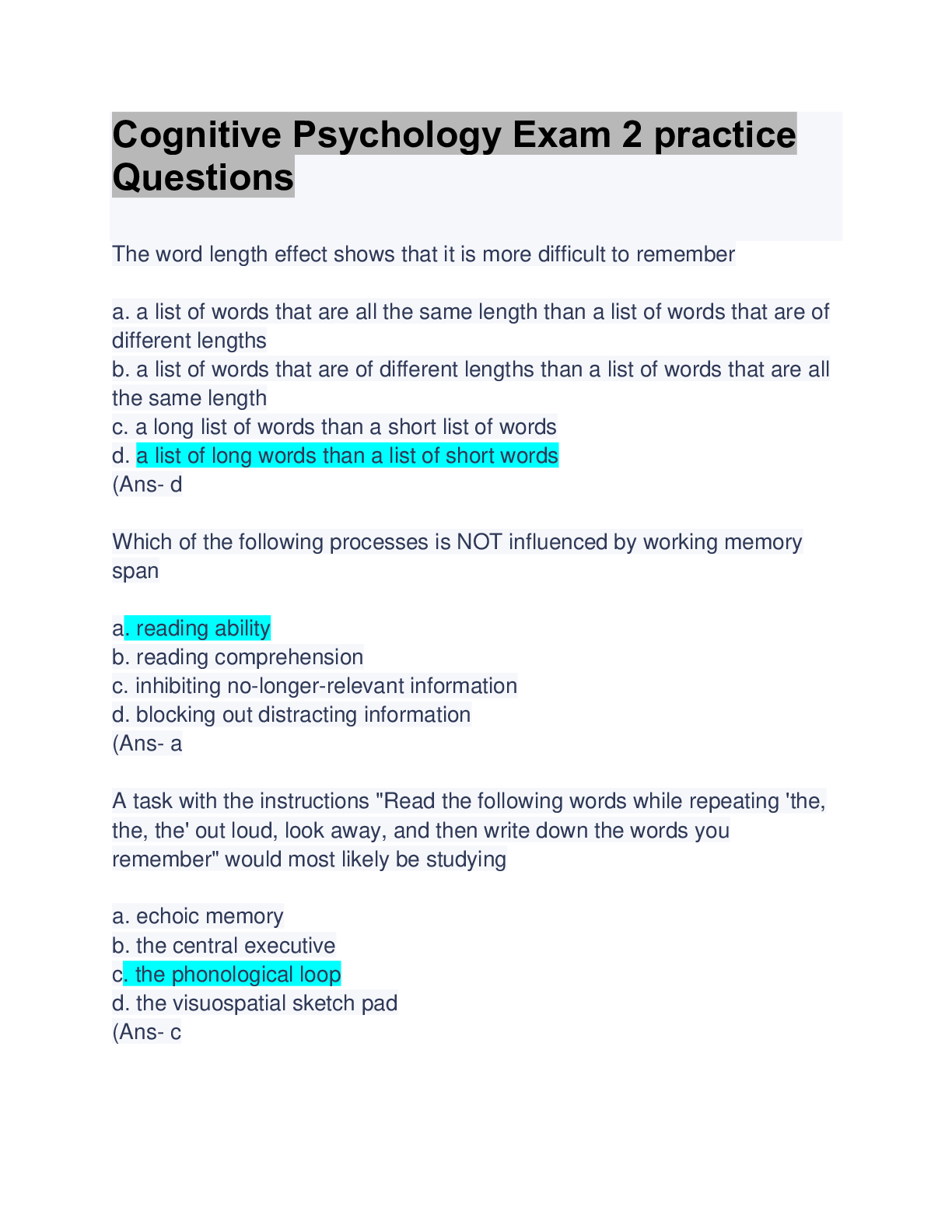

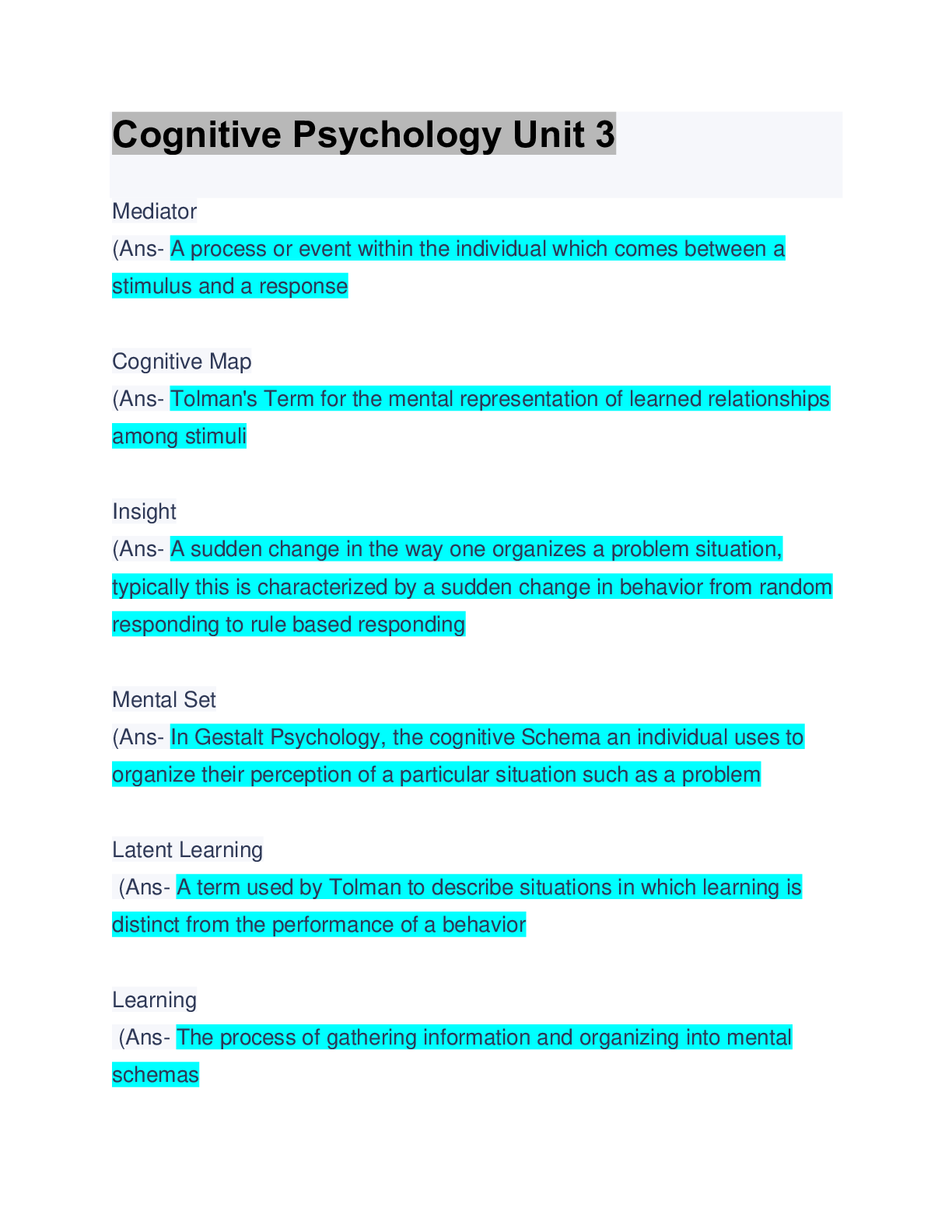



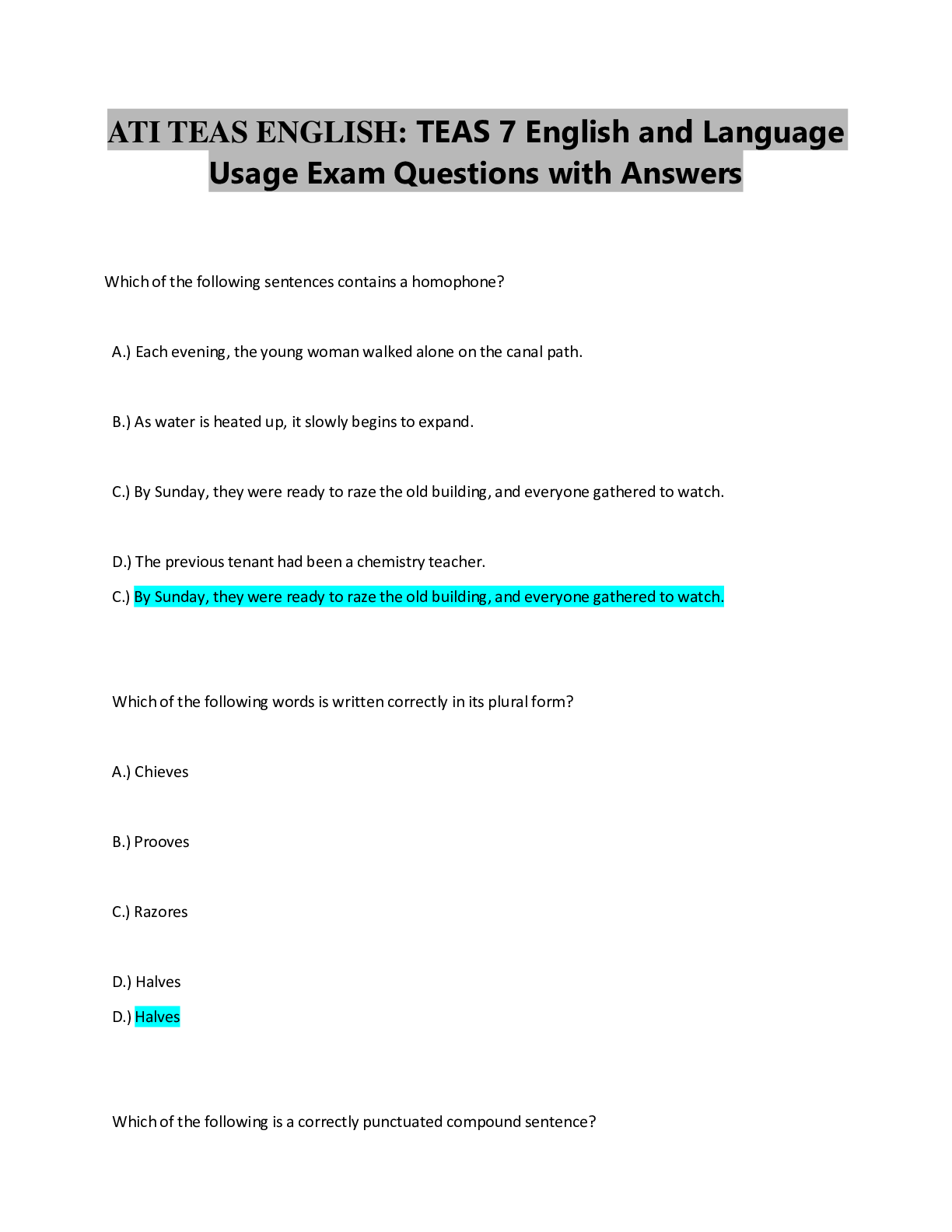




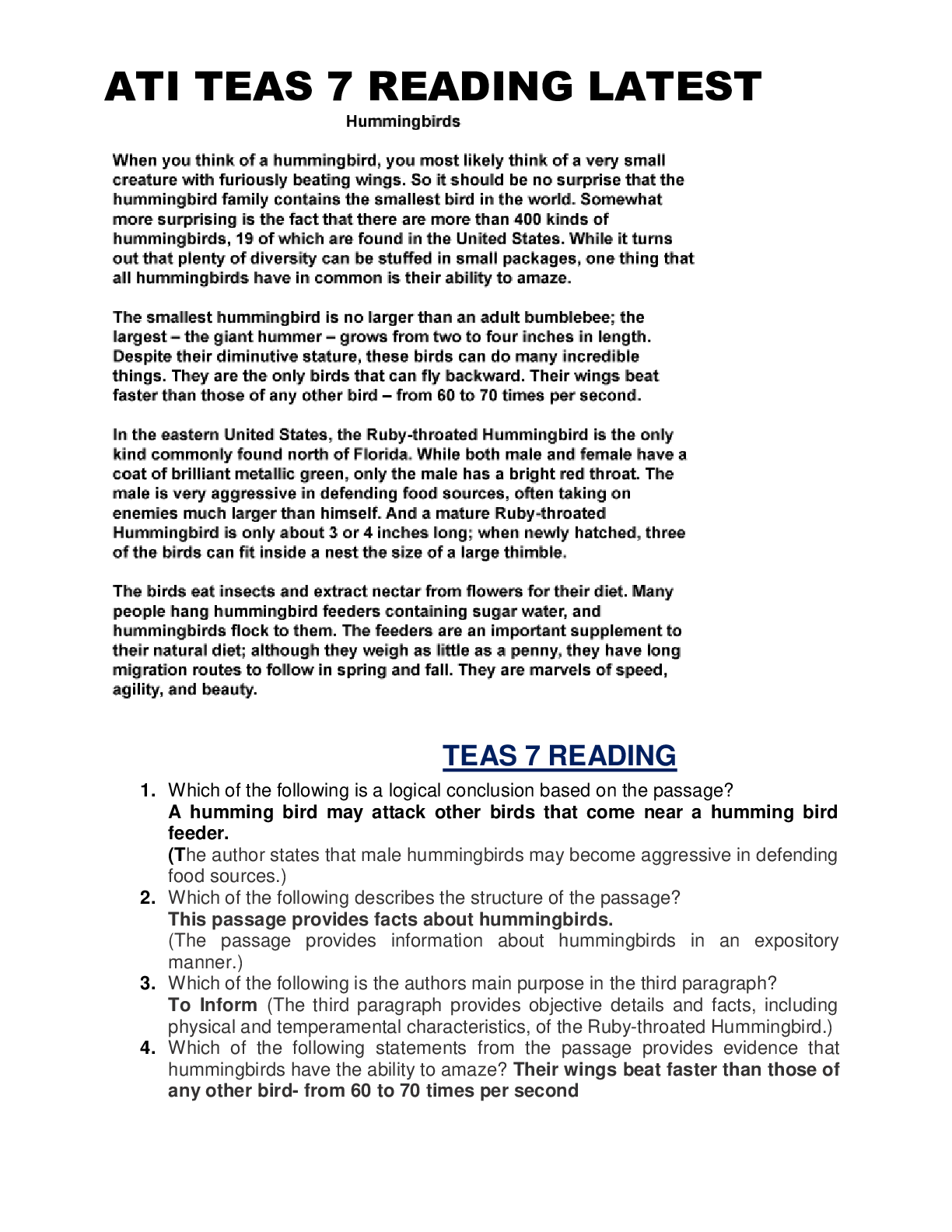
.png)

